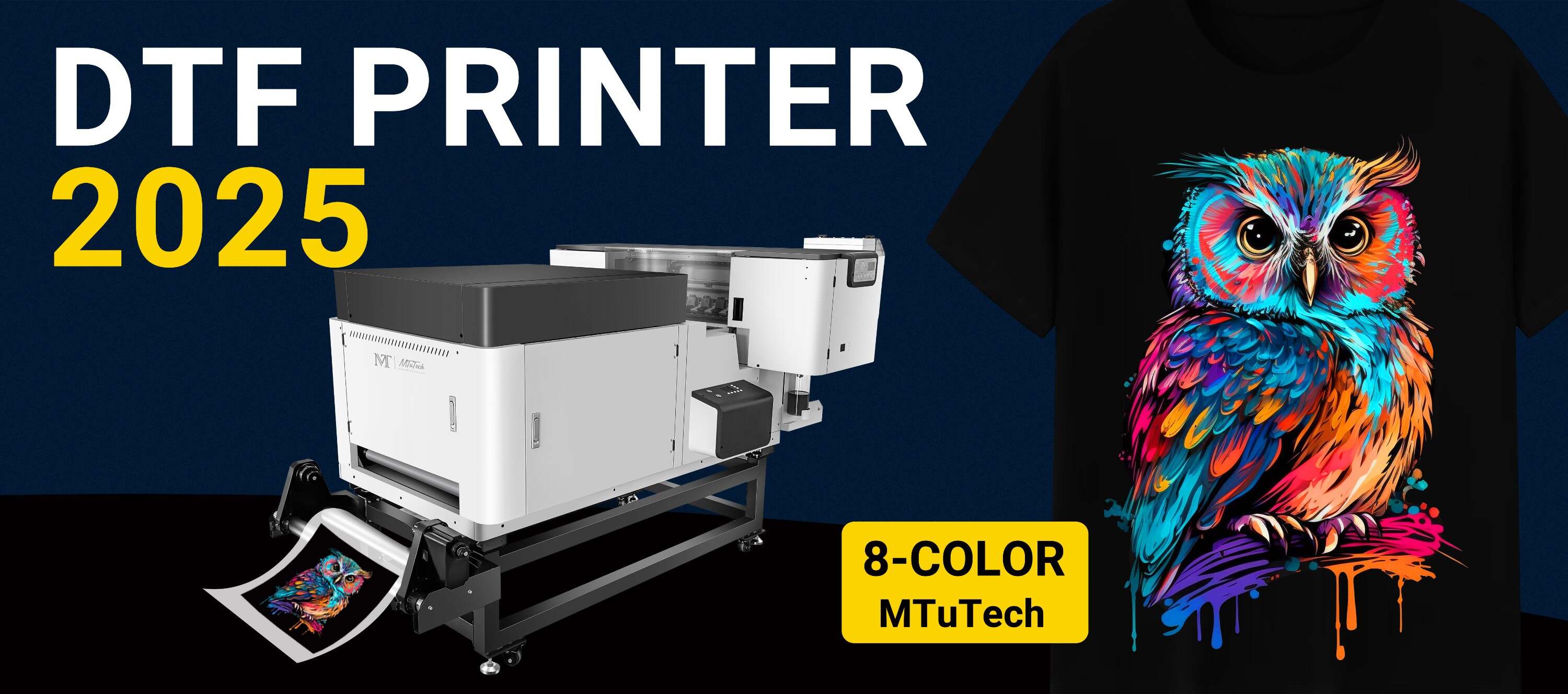Introduction
In the world of custom apparel and textile printing, Direct-to-Garment (DTG) and Direct-to-Film (DTF) printers have emerged as popular choices for businesses and hobbyists alike. Each technology brings its unique advantages and capabilities, catering to various printing needs. In this post, we will dive deep into the features, benefits, and differences of DTG and DTF printers.
What is a DTG Printer?
Direct-to-Garment (DTG) printing is a technique that uses specialized inkjet technology to print directly onto garments. It allows for high-resolution designs and supports a wide range of colors, making it ideal for intricate artwork. DTG printers use water-based inks, which offer vibrant colors and excellent biodegradability.
How DTG Printing Works
The DTG printing process involves several key steps:
Preparation: The garment is pre-treated to ensure the ink adheres properly. This pre-treatment can involve spraying or applying a solution to the fabric.
Printing: The garment is placed on a platen, and the DTG printer uses digital technology to apply the ink directly onto the fabric in the desired design.
Curing: After printing, the garment typically needs to be cured using heat to fix the ink and ensure durability.
What is a DTF Printer?
Direct-to-Film (DTF) printing is an innovative technique that involves printing designs onto a special transfer film, which is then applied to the fabric using heat. This method has gained traction in recent years for its efficiency and versatility.
How DTF Printing Works
The DTF printing process can be broken down into the following steps:
Design Creation: Similar to DTG, the design is created and prepared using graphic design software.
Printing on Film: The design is printed onto a special transfer film that is coated with a release agent, using a DTF printer.
Application: The film is then applied to the garment using heat and pressure, enabling the ink to transfer onto the fabric.
Curing: Once transferred, the design is cured to ensure it adheres well to the material.
Benefits of DTG and DTF Printers
Advantages of DTG Printing
High-Quality Print: DTG printers deliver stunning, photo-quality prints with multiple colors.
Eco-Friendly: Using water-based inks makes DTG printing more environmentally friendly compared to other methods.
No Minimum Orders: DTG printing is ideal for small runs and custom orders, with no minimum order requirement.
Simplicity: The printing process is straightforward and requires minimal setup.
Advantages of DTF Printing
Versatility: DTF printing works well on various fabric types, including cotton, polyester, leather, and more.
Durability: DTF prints are resistant to cracking and fading, ensuring long-lasting designs.
Cost-Effective: DTF printing can be more economical for larger orders, as the printing and application process can be streamlined.
Ease of Use: It is less dependent on the type of fabric, so users can cater to multiple fabric media.
Key Features of DTG and DTF Printers
DTG Printer Features
Ink Type: Primarily uses water-based inks, which are best for cotton fabrics.
Print Quality: Superior image quality with the ability to print gradients and subtle variations.
Speed: Generally slower than DTF, especially for large prints or multiple garments.
DTF Printer Features
Ink Compatibility: Uses a different type of ink, typically including pigments that can adhere to various surfaces.
Flexibility: Able to print on a wider range of materials.
Efficiency: Faster setup and production speed, especially for multiple prints.
Choosing Between DTG and DTF Printers
Choosing the right printer for your needs hinges on several factors, including the type of products you're planning to create, your budget, and your production volume. Here’s a comparative look:
DTG vs DTF: Which is Right for You?
Art Style: If your primary focus is on precise, intricate artwork, DTG might be your best bet. However, for vibrant prints on varied fabrics, DTF could provide better results.
Volume Production: DTF seems to take the lead for higher volume orders, while DTG is perfect for single custom pieces.
Fabric Type: For specialty materials or blends, DTF stands out due to its adaptability.
Operational Costs: DTG might have higher ink and maintenance costs, while DTF offers complete cost control during larger runs.
Conclusion
DTG and DTF printers each have their distinct advantages tailored to different printing needs. Understanding their mechanics, benefits, features, and ideal applications will help you make an informed choice for your business or personal projects. Whether you prioritize eco-friendly printing techniques, color vibrancy, or fabric versatility, both DTG and DTF can offer valuable solutions. If you are looking to invest in this technology, consider your specific requirements and explore options that best fit your goals.
Explore our high-quality DTF printers here to discover various models that may suit your printing needs.
FAQ
What types of materials can I print on using DTG printers?
DTG printers are primarily designed for 100% cotton fabrics. However, some newer models can print on cotton blends and synthetic fabrics with proper pre-treatment.
Can DTF prints be used on dark-colored fabrics?
Yes, DTF printing works exceptionally well on dark fabrics. The process involves using a white ink base layer that enhances color vibrancy on darker surfaces.
Which printer is more cost-effective for small orders?
DTG printing is generally more cost-effective for small to medium-sized custom orders since there are no setup costs for screens or transfers. However, for larger bulk orders, DTF might offer lower per-piece costs.
How does the durability of DTG prints compare to DTF prints?
DTF prints tend to be more durable than DTG prints. They are resistant to cracking and fading, while DTG prints can wear out faster under extreme conditions unless properly cared for.

